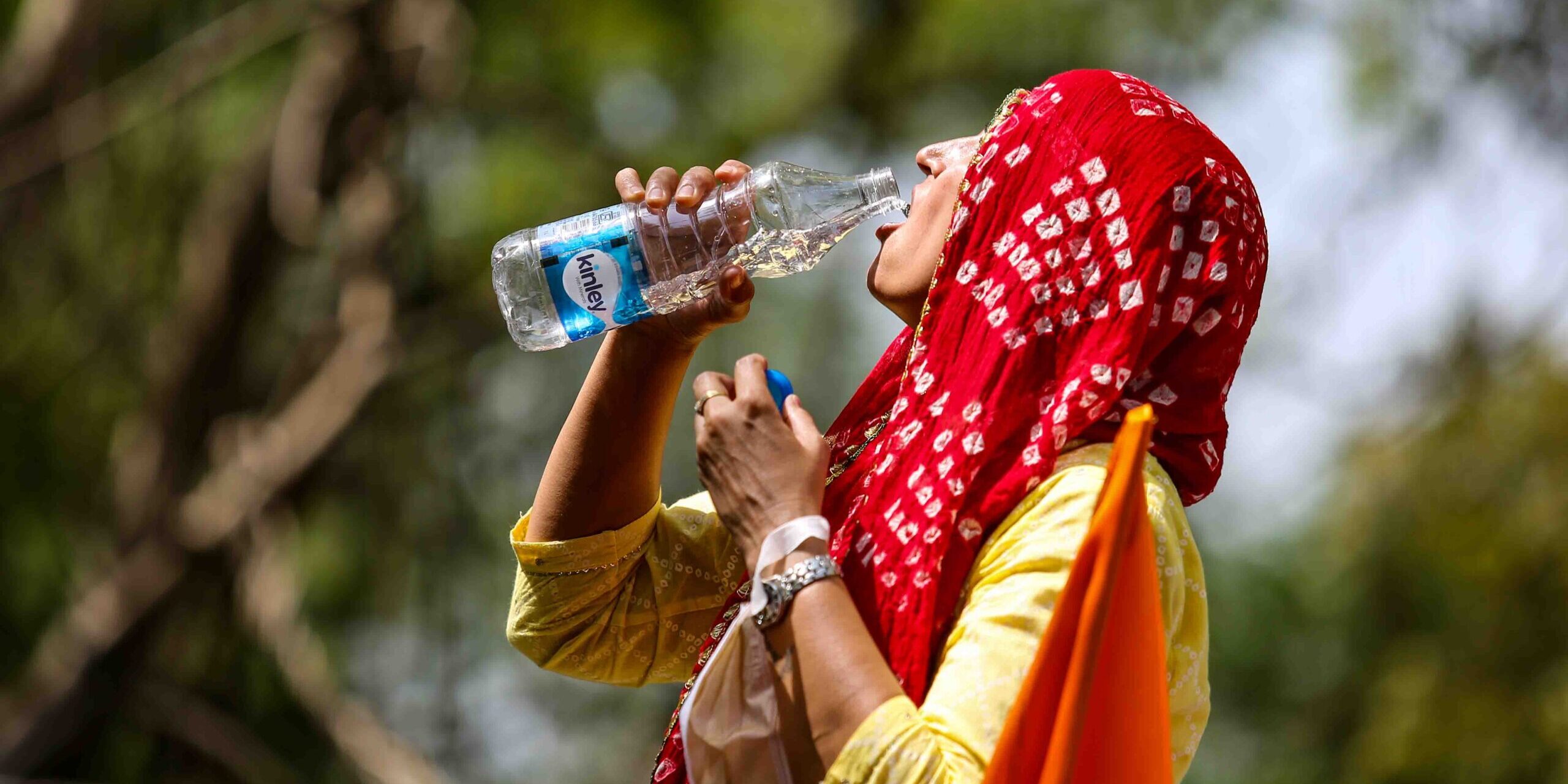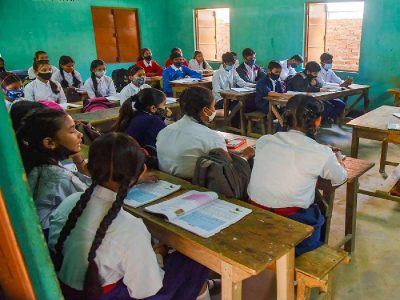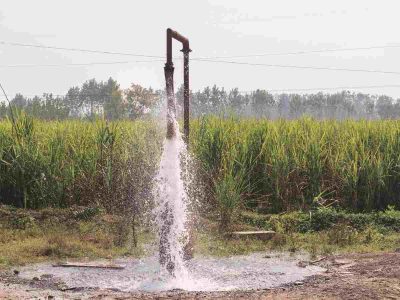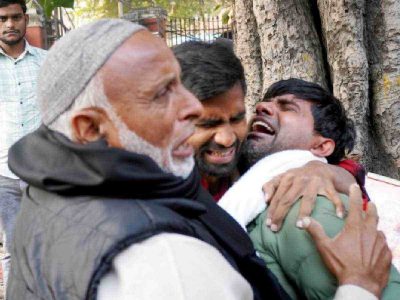On 4 April, the Regional Meteorological Centre (RMC) New Delhi issued a yellow alert for the north-west region. The heatwave warning is a preliminary alert whereas a red alert means increased severity. According to the department’s weekly forecast, the same situation will prevail in the second week of April.
If we look at the present weather forecast for the next five days, the national capital will see more heat waves as the temperature will hover between a minimum of 20 degrees Celsius to a maximum of 42 degrees Celsius.
If it’s any consolation, Delhi-NCR is not alone in this ordeal. “Heatwave spell is likely to continue over Punjab, south Haryana-Delhi, Rajasthan, Uttar Pradesh and Madhya Pradesh during the next five days and over Gujarat, Vidarbha, Jharkhand during the next two days,” says Indian Meteorological Department (IMD).
A heatwave is a condition when the weather is abnormally hot for more than two days. In other words, we can explain heatwaves as times when the temperature rises more than 40 degrees Celsius and at least 4.5 degrees Celsius above normal in the plains.
The weather is in fact the top talking point now, as most people plan their getaway to hills and cooler climes only in May-June. With schools and colleges having opened after the long Covid break and offices back to normal functioning, it seems most people will have to stay put in the tri-city area and brave the high temperatures.
According to the IMD, the last month of March was the hottest March in 122 years. March 2022 has broken the record of March 2010, when the average temperature of the month was recorded at 33.09 degrees Centigrade, while this year it touched the 33.10 mark.
The IMD is citing low rainfall in the northern region as the reason behind the intense heat last month. Delhi-NCR has recorded no rainfall in March and this has made conditions worse for the residents of the city.
With the rising mercury, people will experience several health problems – some minor, some severe – like dehydration, heat cramps, heat exhaustion and heatstroke. According to health experts, children and elderly people with co-morbidities should avoid going out from the hours between noon and late afternoon.
Why Delhi is burning
Deputy Director General of RMC Charan Singh, while talking with Patriot, explained the reason behind the high temperatures. “As the season changes, Earth’s hemisphere also changes. We enter into the northern hemisphere. Our location is in the tropical region because of which the daytime also increases and we are exposed to more radiation.”

He goes on to say that when the western disturbance moves 30 degrees to 35 degrees latitude, it brings various effects on the climate of Delhi. “It brings weather, clouds, and moisture from the Arabian Sea and Bay of Bengal. While all this brings rain to the region, this time the western disturbance is moving from the northern latitude. There is no weather system to affect north India. This means winds are not coming from the Arabian Sea as well as from the Bay of Bengal. In this case, we have no weather system in the capital, which makes it a cloud-free region. Because of this, the radiation directly hits the surface, which increases heat”, says Charan Singh.
He further explained that the cold air advection from Kashmir is also not taking place this time, and the region is currently witnessing hot winds coming from Pakistan, which is making the weather hotter.
“In simple words, factors like absence of weather system, full-day radiation and increased day duration have made north-western India and central India hotter”, he explains.
“Rajasthan, Haryana and Delhi-NCR are witnessing a heatwave and the situation will remain the same for the coming five or six days, the RMC head stated.
There are 13 weather stations in the capital which are located across the city. Ridge, Palam, Safdarjung, Ayanagar and Mausam Bhawan weather systems are manual, and the weather stations located at Narela, Delhi University, Pusa, Jafarpur, Mungeshpur, Najafgarh, Pitampura and Mayur Vihar are automatic weather stations.
All the stations in the capital are warning of heatwaves, and according to data from these stations, maximum temperature can touch the 42 degrees Celsius mark in the coming week.
Power consumption
As the mercury rises, power demand also rises. According to power discoms, this year, Delhi’s peak power demand can cross the 8,000 MW mark. Last year, power demand had touched the 7,323 MW mark in peak season, and the highest demand was recorded in 2019 with 7,409 MW consumption.
“After clocking 7,323 MW in 2021, Delhi’s peak power demand during the summer of 2022 may cross the 8,000 MW mark for the first time. This expected peak power demand of around 8,200 MW is an increase of around 285% over the 2,879 MW in 2002”, said Reliance Energy, formerly known as BSES, in a statement.
According to experts, one of the reasons behind this sharp rise in consumption is increased industrial and commercial activity in the capital after the prolonged lockdown. When coronavirus knocked on our doors in 2020 and a series of lockdowns was announced to control the virus, electricity consumption in the capital fell to 6,314 MW in the peak summer season.
The discoms in the capital are now looking at alternate electricity sources to match the increasing consumption. “BSES discoms are geared-up to source adequate electricity to meet the power demand of over 46 lakh consumers and 1.8 crore residents in south, west, east and central Delhi. Green power, including solar and wind, will play an important role in this endeavour”, says Reliance Energy.
Cool spots
- Hauz Khas Deer Park
- Jawaharlal Nehru University
- Delhi University Ridge
- Vasant Kunj
- Sanjay Van
- Rohini
- Delhi metro
- Areas near Yamuna
Hot spots
- LIC office area in CP
- Old Delhi area
- Airport zone
- Transport Nagar
- Indraprastha Estate
- Jamia Nagar
- Delhi bus services
- Narela
- Pitampura
- Bawana
Dousing the fires
Ten severe fire accidents were reported in the last two months in Delhi, three of them in landfills. Delhi Fire Service Director Atul Garg explains how his department is gearing up, including using a drone for the first time and deploying two robots
It took the fire department 50 hours to subside the fire at the Ghazipur landfill, after it was reported on March 28 at around 2:30 pm. This was merely 16 days after the horrific fire that had occurred at the Gokulpuri jhuggi which reported seven casualties.
“The charred bodies are unrecognisable. It seemed that these people were sleeping and could not escape as the fire spread extremely fast,” Atul Garg, Director, Delhi Fire Services, had told media after the shocking visuals had surfaced from the site of the accident in Gokulpuri.

Every summer, such incidents keep the firefighters on their toes. Garg says that this year, there is a slight change in pattern. “Earlier such incidents occurred from April onwards, but this time, it started a bit sooner in March itself”, he says.
He adds that though there are no specific places in the city that can be pinpointed as the most fire-prone spots, the maximum number of cases that the fire services have dealt with in the last 15 days or so were all mostly in Bawana and settlements around the Yamuna.
When asked about the possible reasons that have caused this change, and whether this had anything to do with the unlocking of city spaces and resultant growing economic activities, he said, “These areas have more factories, and I think, economic activity is on the rise in such areas. Places which have small-scale factories and godowns are seeing far more cases of fire currently instead of jhuggis.”
From January to March, a lot of cases reported were from landfills or commercial spaces. On 1 April, the Parikrama Hotel in CP reported a fire accident on the top floor due to a mishap in the kitchen area. Six fire tenders were rushed to the spot. A hotel in Uttam Nagar had also reported a similar fire accident.
Besides, on 8 March, a plastic granules factory in the Bawana industrial area had caught such a massive fire that 25 fire tenders were sent to bring it under control. A drone was used for the first time by the fire services. “These drones help us in making decisions when we are on the site. It is not a fire-fighting tool but surely an assisting entity”, Garg said.
Better logistics
So how do they gear up? “Besides limiting the leave allowed to our team members around this period, we are ensuring that all our vehicles are well-maintained early on, to make sure they are available in large numbers when the need arises. It is necessary because when we are loaded with hundreds of calls on a daily basis, these vehicles are in need of proper maintenance. We have also brought in two new robots to help us”, Garg informed.
Adding on the improved manpower, he said that this time, they have recruited 500 more people on a contract basis, who are well-trained by now. He added, “We have put a halt on providing our vehicles to private entities so that we have these available for the purposes of combating fire accidents. Unless the vehicles are required by higher officials in the government, we try to keep our vehicle count intact because more the vehicles, the faster we can kill the fire.”
Garg also shed light on the possibility of a rise in cases of fire incidents in the jhuggis soon. “As the temperature rises and these places are heavily populated and congested, we start hearing of more cases around that time each year”, he said.
Compensation
In the Gokulpuri fire case, the victims’ families have been told to be compensated with an ex gratia amount of Rs 10 lakh, while Rs 25,000 is supposed to be provided to all those whose shanties had burnt down in the accident.
On the subject of compensation, Garg says, “No incidents of fire-fighters being majorly injured has occurred so far. We are supposed to be compensated if anyone from the team gets severely injured or is martyred while they are on a rescue mission. But in any other case, minor incidents are common for us when we are on the accident site, but those are not really anything serious.”
Fires in the past three months:
- Fire accident at Parikrama restaurant’s top floor in CP: Apr 1
- Ghazipur landfill fire starts: Mar 28
- Bhalswa landfill fire starts
- Tughlaqabad landfill fire starts
- Plastic Granules factory at Bawana: Mar 8
- Gokulpuri jhuggi fire accident : Mar 12
- Punjabi Basti fire: Feb 7
- Sabzi Mandi fire: Feb 7
- Karkardooma court fire on Feb 5
- Uttam Nagar hotel fire: Feb 13
- Narela fire: March 2
- Hari Nagar fire: Jan 19
For more stories that cover the ongoings of Delhi NCR, follow us on:
Instagram: https://www.instagram.com/thepatriot_in/
Twitter: https://twitter.com/Patriot_Delhi
Facebook: https://www.facebook.com/Thepatriotnewsindia





